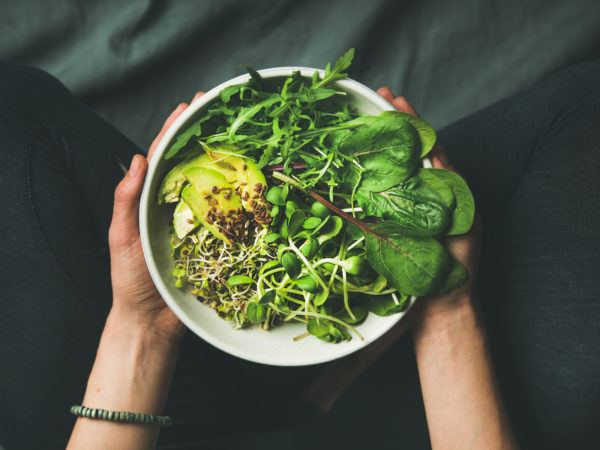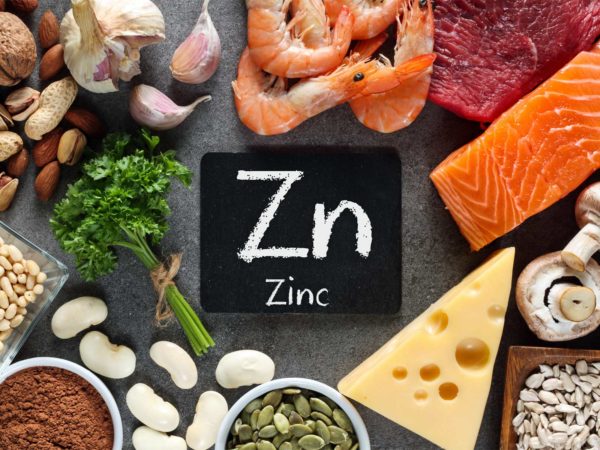5 Sources of Monounsaturated Fats that Will Surprise You
Many factors contribute to the twin epidemics of obesity and chronic disease in America (and, increasingly, throughout the world). But two dietary factors play the greatest roles, by far. These are the overconsumption of:
- Sugar (and other simple carbohydrates) and
- Unhealthy fats
In previous articles, I’ve discussed the negative effects of a high-carbohydrate diet and chronically-high insulin levels many times in these pages.
Today, I’d like to focus on fats… in particular, one of the healthiest fats you can consume and the positive effects it can have on your body. I will also share with you the most potent (and surprising) sources of this healthy fat.
Healthy Fats: You Are What You Eat
You’ve certainly heard the adage that, “You are what you eat.” And this is especially true when it comes to fats. The type of fat in your diet dictates the type of fat in your cells. In other words, you literally become what you eat.
The make-up of fat in a healthy human body is normally about 97 percent monounsaturated and saturated. The other 3 percent should be polyunsaturated (half of which should be omega-3 and the other half omega-6). That means that omega-6 fats should make up only about 1.5 percent of your total calories.
But here’s the problem…
It has been shown that approximately 80% of the fats consumed in the United States are omega-6 fats. Today, the average American eats more than 75 pounds of these industrial fats each year!
These are primarily found in vegetable, corn and seed oils, which are the primary ingredients in most commercial sauces, dressings, chips, snacks and all manner of processed foods. Conventionally-raised meats are also very rich in these unhealthy fats due to the corn-rich diet on which these animals subsist.
When you consume these extracted and concentrated oils, your cell membranes incorporate these molecules. The problem is that they are highly unstable, vulnerable to oxidative stress and prone to causing inflammation.
These fats (along with the dreaded “trans fats”) also inhibit the natural permeability of the cellular wall. This means that some nutrients are unable to enter the cell… while waste products and cellular debris are unable to exit.
As you can imagine, this is a virtual prescription for cancer, heart disease, diabetes, obesity, cataracts and macular degeneration, auto-immune disease, wrinkled and cancer-prone skin… and the list goes on.
Healthy fats, on the other hand, are essential for cellular health. They improve your ability to absorb nutrients from your food, they reduce inflammation, and they can even help to balance blood sugar and foster weight loss.
And one of the most important healthy fats are monounsaturated fatty acids (MUFAs).
The Healthy Benefits of Monounsaturated Fats
Monounsaturated fatty acids are liquid at room temperature. They are commonly associated with the health benefits of the “Mediterranean Diet.” But before we explore some of these benefits, let’s take a look at what makes these fats unique:
- MUFAs Don’t Readily Oxidize: Chemically speaking, monounsaturated fats contain a double bond. This makes them very stable (even in the presence of heat) and much less prone to oxidation than omega-6 fats.
- Antioxidant Benefits: The foods rich in MUFAS are generally rich in antioxidants, minerals and phytonutrients, including magnesium, selenium, vitamin E and phenolic compounds, as well as lutein and zeaxanthin (two potent antioxidant carotenoids).
- MUFAs Reduce Inflammation: A study published in the American Journal of Clinical Nutrition examined data from 690 women in the Nurses’ Health Study. Researchers found that higher “diet quality” scores – particularly on the Mediterranean Diet Index – were associated with much lower markers for inflammation and endothelial dysfunction (endothelial cells are those that line inside of blood vessels).
Now, let’s look at some of the specifics…
- In 2005, Greek scientists studying more than 3,000 men and women found those eating a diet closest to the traditional Mediterranean diet had 19% lower oxidized LDL levels than those with the lowest adherence to the diet. It was also shown that this diet was found to have the greatest positive effect on the dilation of blood vessels.
- A study published in Public Health Nutrition found that women getting the most monounsaturated fat had a significantly lower risk of breast cancer than those getting the least. Another study, published in Cancer Causes and Control, found that men who consumed the most MUFAs experienced the greatest reduction in prostate cancer risk.
- According to a study in Diabetes Care, when test subjects ate a carbohydrate enriched diet, they accumulated fat in the abdomen. When they ate a diet that had more MUFA, abdominal fat decreased (even without exercise!).
- A study published in the American Journal of Clinical Nutrition: After six months on a MUFA-rich diet, the insulin levels of test subjects were reduced by 9.4% and the insulin resistance score was reduced by an average of 12.1%. Another study showed similar reductions in fasting insulin levels in subjects diagnosed as insulin resistant.
So, what are the best sources of these healthy fats?
Beyond Olive Oil: Superior Sources of Monounsaturated Fats
You’ve probably heard that olive oil is an excellent source of monounsaturated fats. This is true in some cases. But what you might not know is that independent researchers recently tested numerous olive oils for their potency and purity. As reported in the New York Times, they found that nearly 70% did not match the nutritional content reported on the label.
In fact, some of these “olive oils” were found to other refined oils… and even green food coloring!
Macadamia nuts and macadamia nut oil are also excellent sources of MUFAs, as are avocados and avocado oil.
But here’s something that may surprise you: Some of the best sources of monounsaturated fats don’t come from plant sources… but rather from animal origin.
Take a look at the amount and ratios of fats per 100 grams in these foods:
| FOOD | SAT | MUFA | PUFA |
| Olive Oil | 14 | 73 | 11 |
| Avocado Oil | 12 | 71 | 13 |
| Macadamia Nuts | 12 | 59 | 1.5 |
| Duck Fat | 33 | 49 | 13 |
| Pork Lard | 39 | 45 | 11 |
| Beef Tallow | 49 | 42 | 4 |
| Lamb Tallow | 47 | 41 | 8 |
| Avocados | 2 | 10 | 2 |
| Grass-Fed Beef Ribeye | 3.6 | 3.5 | 0.3 |
| Bison (Ground) | 3.5 | 3.3 | 0.4 |
| Grass-Fed Beef Strip Steak | 1 | 1 | 0.1 |
What’s more, sources of monounsaturated fats from animal origin (including duck fat, lard and tallow) are also more stable under heat thanks to higher levels of beneficial saturated fats, making them your ideal choice for cooking.
Choosing an ancestral diet rich in healthy fats – in the right ratios – is one of the best things you can do for your health. Sear grass-fed steaks and sauté veggies in beef tallow… enjoy a fresh arugula salad with avocados and real olive oil… enjoy a breakfast of farm fresh eggs and grass-fed beef breakfast sliders… and snack on macadamia nuts to get a full spectrum of beneficial nutrients and healthy fats.





Leave a Reply